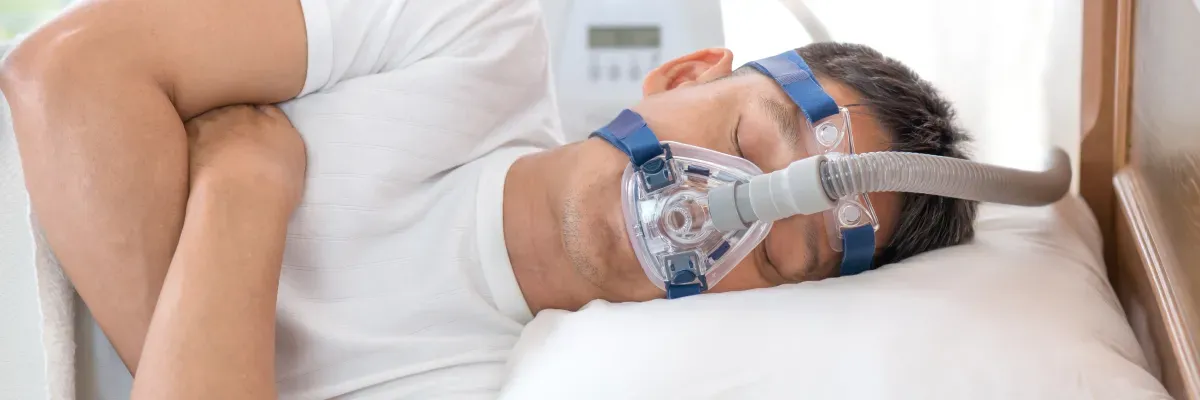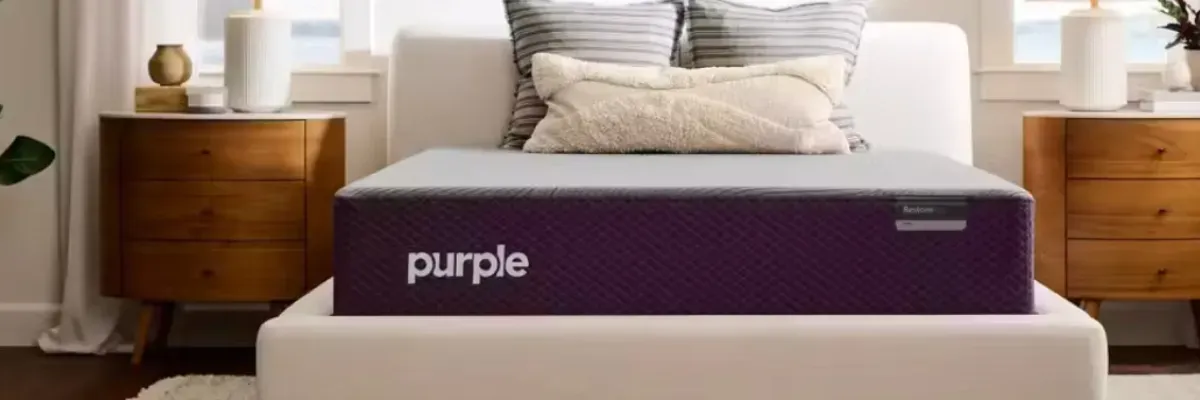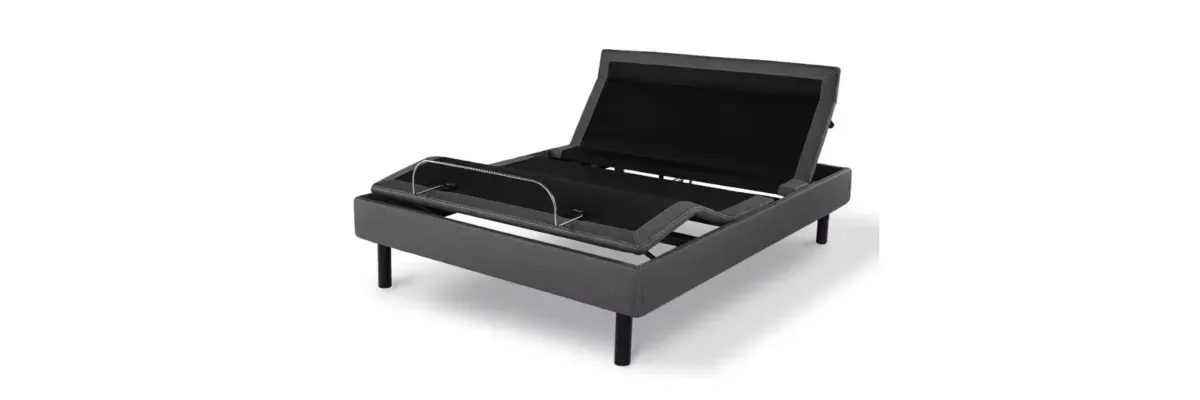The Role of Mattresses in Reducing Sleep Apnea Symptoms
Mon Jan 06 2025
Sleep apnea doesn’t just disrupt your breathing—it disrupts your life. While treatments like CPAP machines are effective, your mattress could be an overlooked ally in managing your symptoms. The right one can improve your posture, keep your airways open, and help you sleep soundly again.
Let’s explore how mattresses affect sleep apnea and how finding the right one can make a big difference.

What Is Sleep Apnea? (And Why It’s a Big Deal)
Sleep apnea happens when your breathing stops and starts during sleep. This can be due to a blocked airway (obstructive sleep apnea) or your brain not sending the right signals (central sleep apnea).
Common symptoms include:
-
Snoring that might wake up your partner.
-
Gasping or choking during sleep.
-
Waking up tired, even after a full night in bed.
-
Morning headaches or trouble concentrating.
Untreated sleep apnea can lead to serious health problems like high blood pressure, heart disease, or diabetes. That’s why addressing it is so important—and your mattress might be part of the solution.
How the Right Mattress Reduces Sleep Apnea Symptoms

1. Better Spinal Support = Clearer Airways
When your body isn’t supported properly, your spine can fall out of alignment, which can make airway blockages worse. A mattress that contours to your body—like the TEMPUR-ProAdapt Medium Hybrid Mattress (Model: 10752151). A mattress like this keeps your spine aligned and helps reduce pressure on your neck and throat.
2. Improves Sleep Position
Some sleep positions, like lying on your back, can worsen sleep apnea. A side-sleeping position can help keep your airways open. Pairing a supportive mattress with an adjustable base lets you elevate your upper body or shift into the position that feels best.

3. Reduces Nighttime Disturbances
If you or your partner are constantly waking up, a mattress with motion isolation can help. The Purple RestorePlus Mattress (Model: 102123997) absorbs movement, making you less likely to wake up when shifting positions after a sleep apnea episode.
So, when you’re shopping for a new mattress, use this guide to help you narrow down your options:
✅ Spinal Alignment: Look for a mattress that supports your natural curves. Memory foam and hybrid mattresses are excellent for this.
✅ Pressure Relief: Side sleepers need a mattress that cushions their shoulders and hips without sinking too much.
✅ Breathability: If you sleep hot, pick a mattress with cooling features like gel-infused foam or breathable latex.
✅ Motion Isolation: A mattress with good motion isolation keeps you undisturbed even if your partner moves around.
Mattresses for Sleep Apnea Relief
When shopping for a mattress, focus on support and comfort. Here are the top types to consider:
-
Memory Foam Mattresses: Memory foam mattresses mold and contour against your body, giving you support exactly where you need it. This is especially helpful if you sleep on your side, as it cradles your shoulders and hips while keeping your spine aligned.
-
Hybrid Mattresses: Hybrid mattresses combine foam and springs, offering a balance of pressure relief and support. They’re also great for temperature regulation, which is a bonus if you’re prone to overheating.

How Adjustable Bases Help With Sleep Apnea
If you struggle with sleep apnea, consider pairing your mattress with an adjustable base. Elevating your head slightly can help reduce airway collapse and snoring, making it easier to breathe throughout the night.
For example, the Serta Motion Perfect Adjustable Base (Model: 500829419) lets you customize your sleep position. Paired with a supportive mattress, it can make a noticeable difference in your sleep quality.
Ready to Alleviate Your Sleep Apnea Symptoms?
If sleep apnea keeps you from waking up refreshed, it’s time to find a mattress that supports you. Upgrade today and feel the difference every night.
Contact us or visit your local Mattress Direct showroom, or get in touch with us today. Our team is here to help you explore a wide range of top-rated mattresses, pillows, bedding essentials, and more.
Not sure where to start? Try our bedMATCH system, designed to find your perfect mattress in minutes.
Related readings from our blog:
Why Choose Mattress Direct?
At Mattress Direct, we make finding the perfect mattress simple. Here’s what you can expect:
-
Expert advice tailored to your needs.
-
Top brands like Beautyrest, Purple, Tempur-Pedic, and Sealy.
-
Competitive prices and financing options to fit your budget.
FAQs: Mattresses and Sleep Apnea
1. Can a mattress affect sleep apnea?
Yes, the right mattress can support proper sleep posture and help keep airways open, which may reduce sleep apnea symptoms. Poor support or a sagging mattress can make symptoms worse by misaligning the spine or increasing airway pressure.
2. What is the number one cause of sleep apnea?
The most common cause of sleep apnea is obstructive sleep apnea, which occurs when the muscles in the throat relax too much and block the airway. Risk factors include obesity, genetics, and certain medical conditions.
3. Can sleeping on a bad mattress cause breathing problems?
Yes, a bad mattress that doesn’t support your body properly can worsen breathing problems by putting pressure on your neck or misaligning your spine, contributing to airway collapse.
4. What’s the worst for sleep apnea?
Sleeping flat on your back is generally the worst position for sleep apnea, as it increases the likelihood of airway collapse. A mattress that’s too soft or sagging can also exacerbate symptoms by failing to support your body.
5. Is it better to sleep flat or elevated with sleep apnea?
It’s better to sleep elevated with sleep apnea. Elevating your head slightly—using an adjustable base or wedge pillow—can reduce airway collapse and help you breathe more easily.
We Are Here to Help. Contact Us Today!
Give us a Ring!
Let’s Chat
Prefer to text?
Come see us!
Copyright © 2009 - 2025 Company All Rights Reserved.
This site is protected by reCAPTCHA and the Google Privacy Policy and Terms of Service apply.

